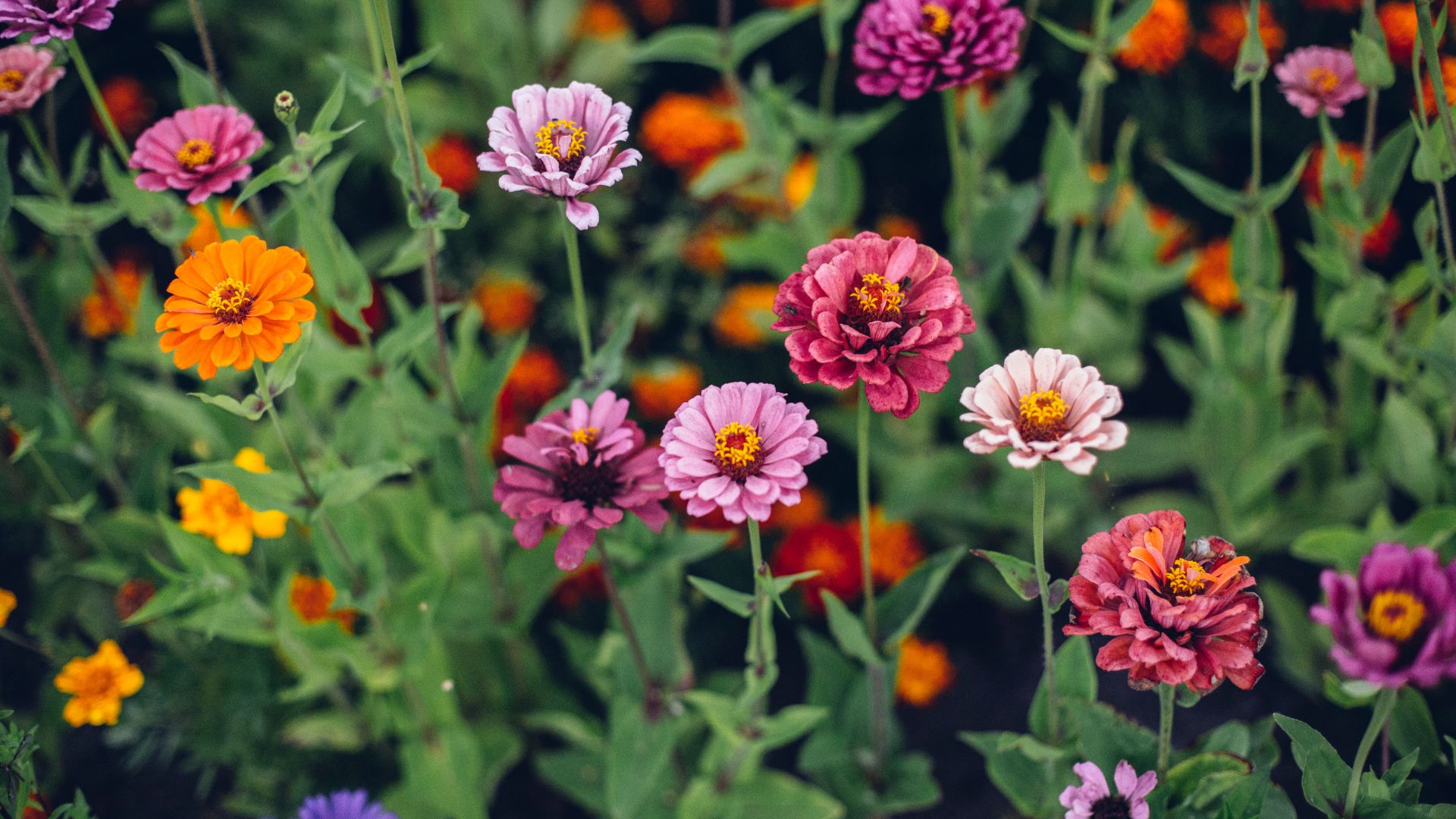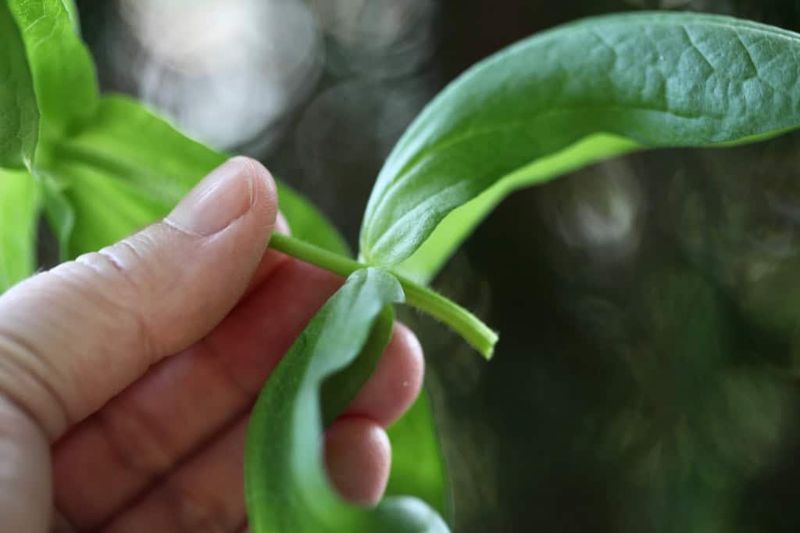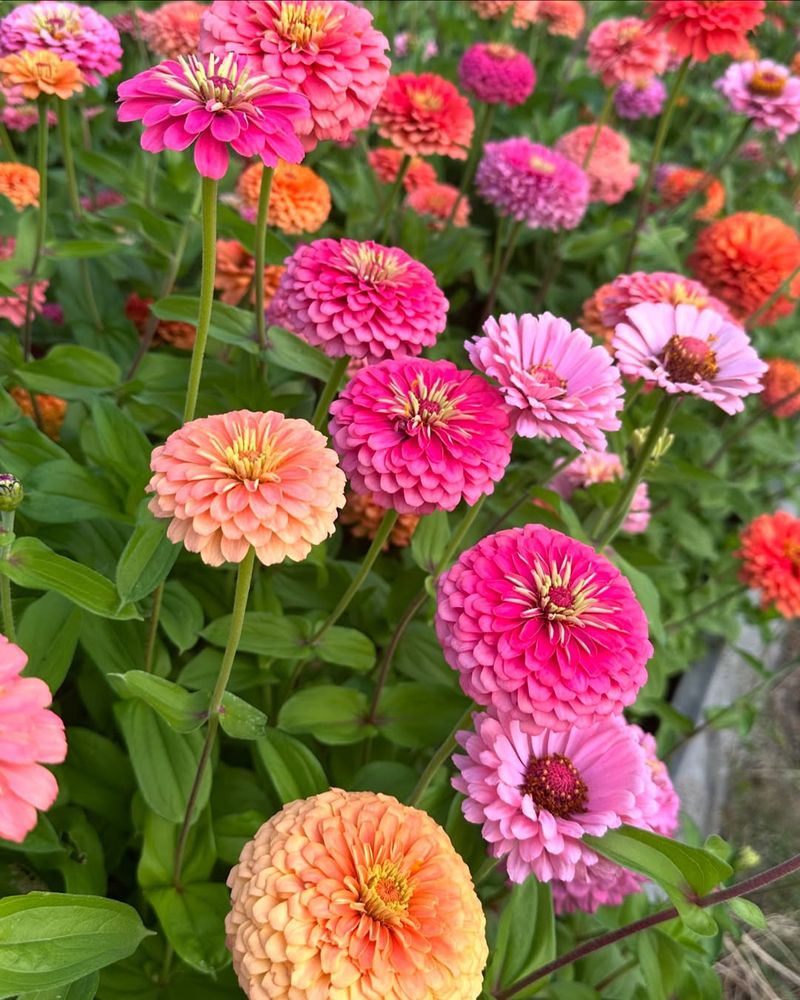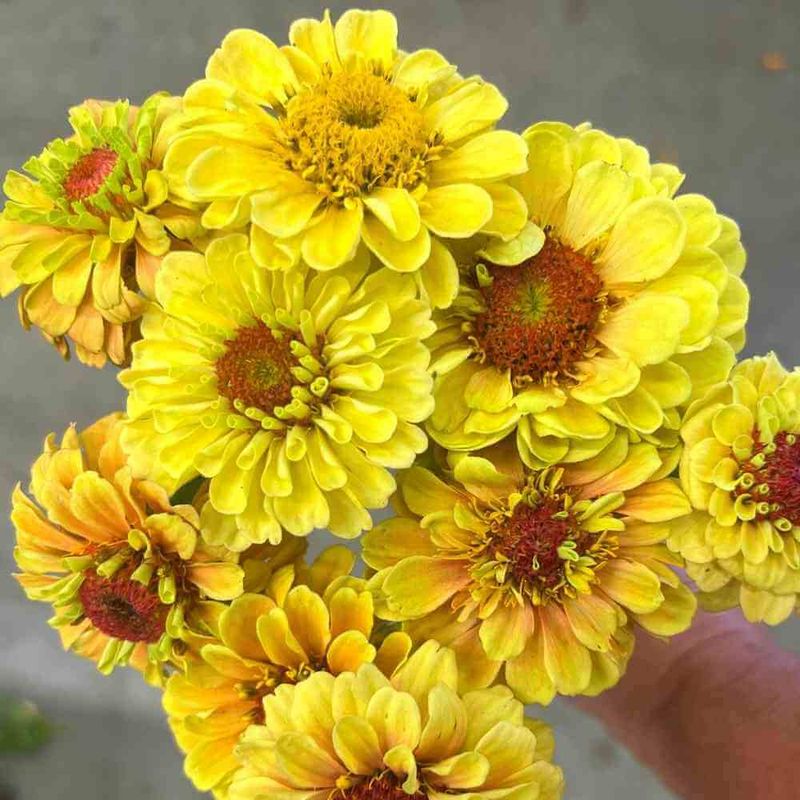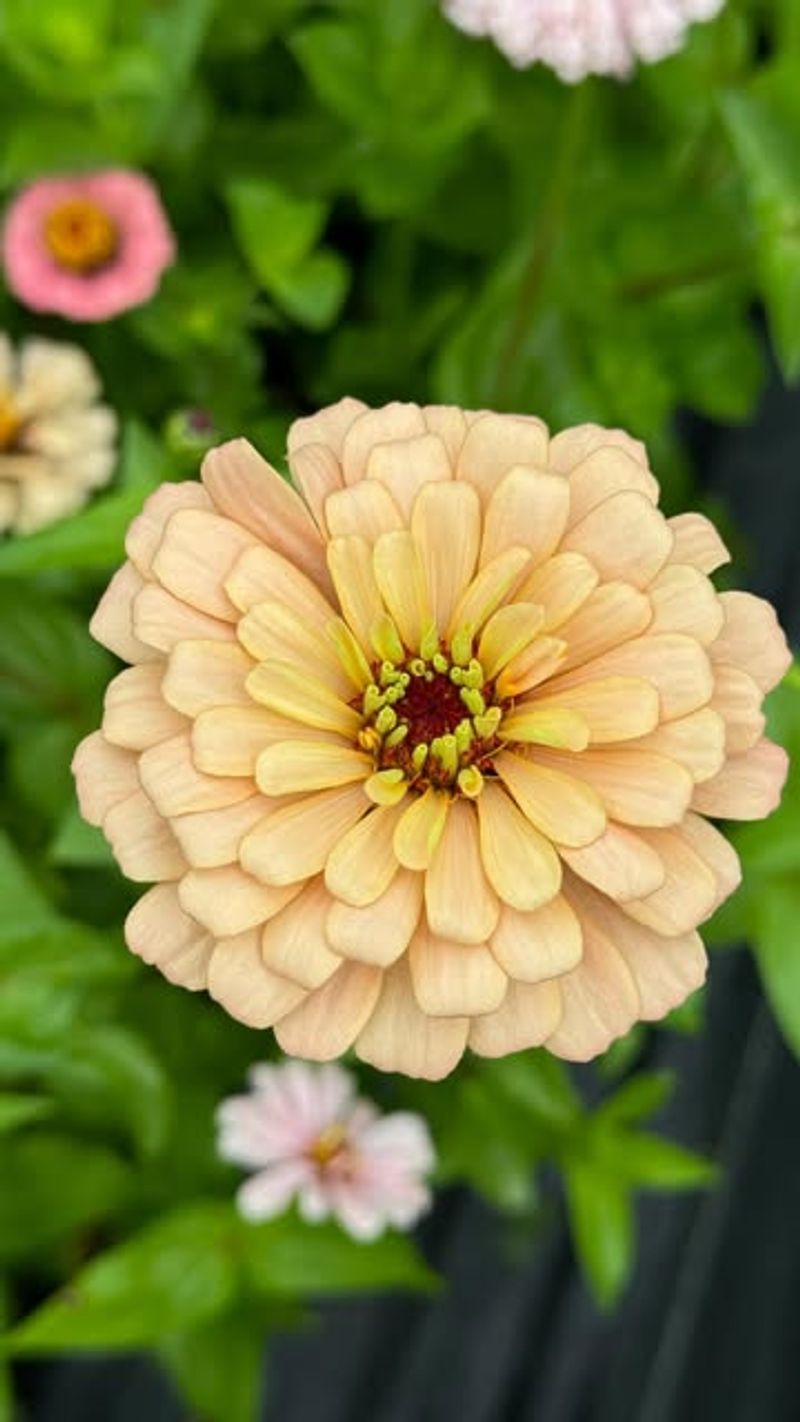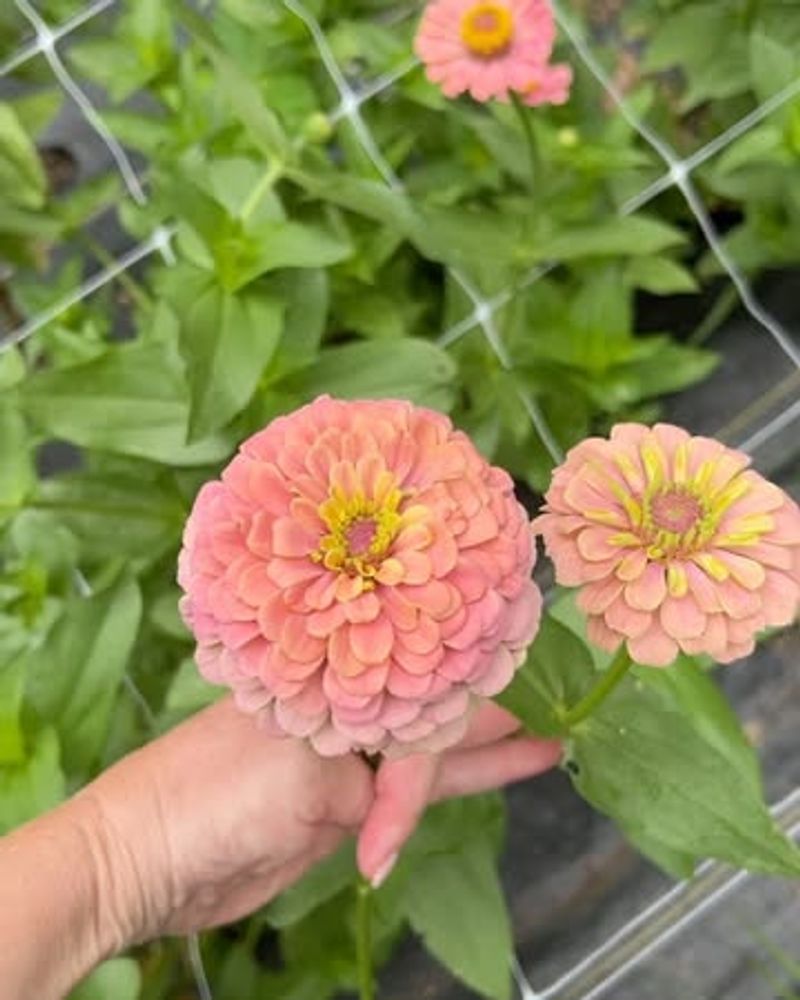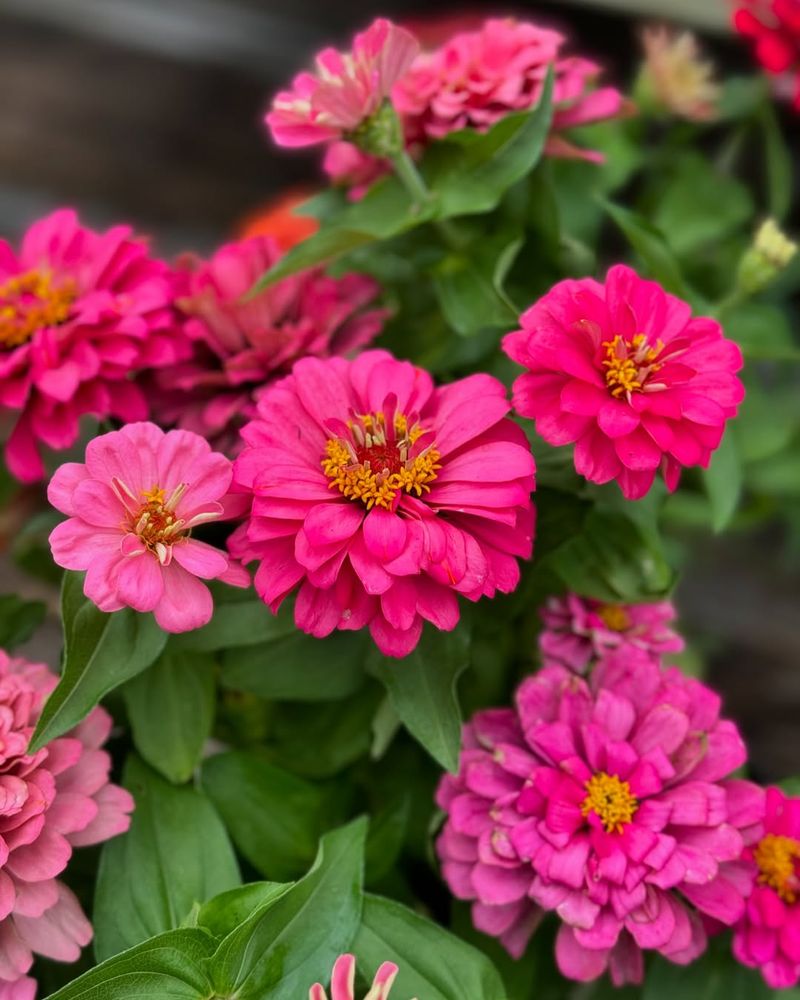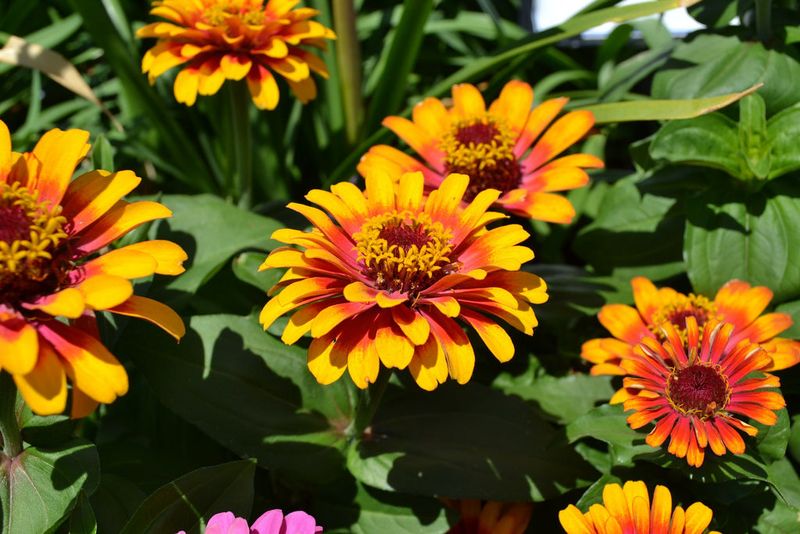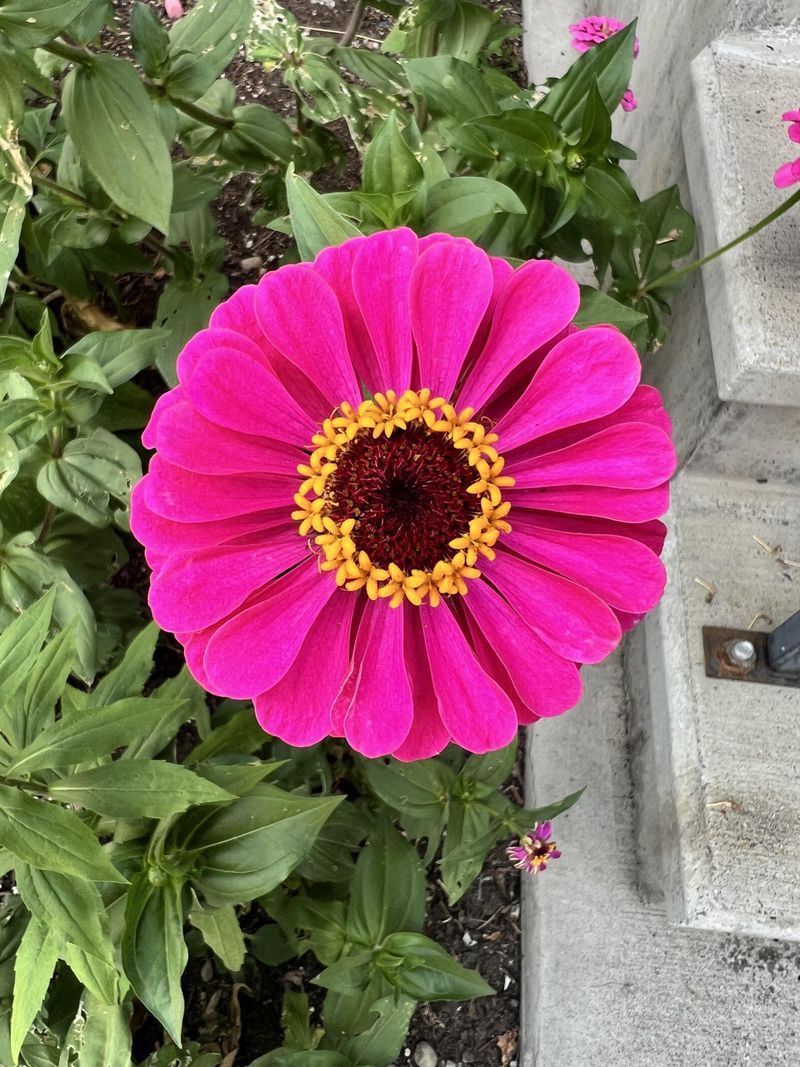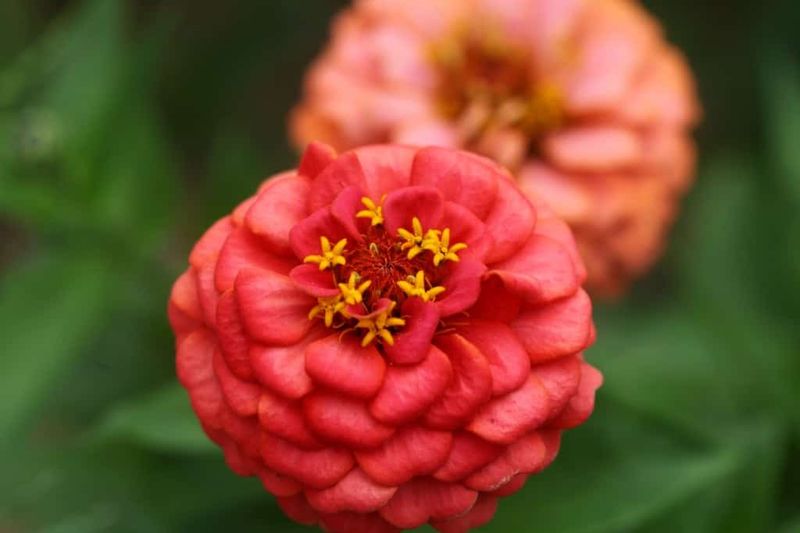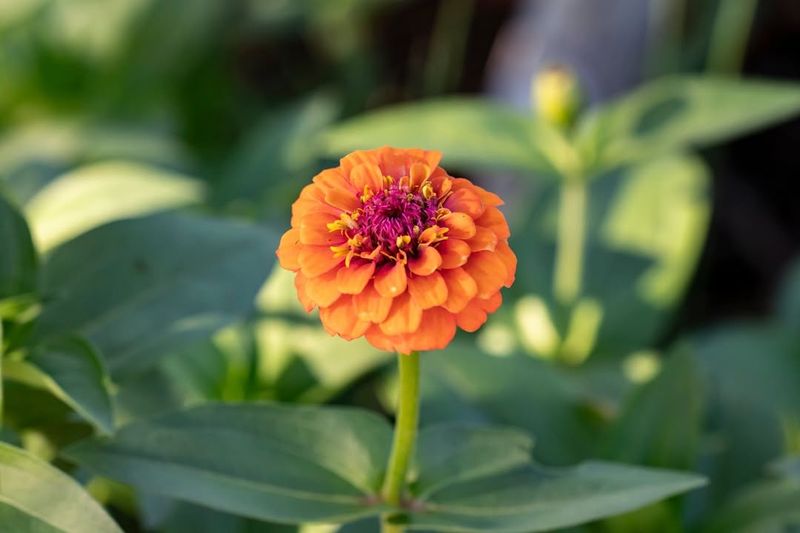Cutting zinnias at just the right moment is one of those little gardening skills that makes a big impact—especially if you love bringing fresh flowers indoors. I used to get so excited that I’d snip them too early, only to watch them droop in the vase a few hours later. Total heartbreak.
But once you learn a few simple tricks, it becomes second nature. Zinnias are incredibly giving plants—they’re bright, cheerful, and the more you cut them, the more they bloom. But timing is everything. If you cut too soon, the stems won’t have enough strength, and the flowers might flop. Wait too long, and you miss that peak moment of color and freshness.
Over time, I picked up some super helpful tips from fellow gardeners and now I can usually tell at a glance when a zinnia is ready for the vase. So, here are some easy, reliable ways to tell if your zinnias are ready to be cut.
1. Check The Bloom Size
A common sign your zinnias are ready for cutting is when the blooms reach their full size. Look for petals that have fully unfurled and rounded out. A zinnia in its prime will have a wide, open appearance, making it perfect for display.
Avoid cutting when the bloom is still tiny or tightly closed, as these flowers may not open properly indoors. Larger, fully developed blooms often last longer in bouquets, maintaining their charm.
Remember, while big blooms are desirable, be careful not to wait too long. Overripe flowers tend to droop quickly once cut.
2. Firmness Of The Stem
A sturdy stem means your zinnia is ready for picking. Gently squeeze the stem a few inches below the bloom; it should feel firm, not floppy. A flexible stem often indicates an immature flower.
Firm stems support the bloom better, ensuring they remain upright in your vase. If the stem feels weak, give it a bit more time in the garden.
A quick check before cutting ensures the best quality. Strong stems are crucial as they help the zinnia absorb water more efficiently, keeping your arrangement fresh longer.
3. Observe The Flower’s Color
Color is a reliable indicator of a zinnia’s maturity. Rich, saturated hues indicate readiness for cutting. Faded or washed-out colors suggest either over-ripeness or underdevelopment.
Bright, uniform colors are not only eye-catching but also signal that the flower is in peak condition. Look for consistent coloration across petals for the best time to cut.
If the colors appear dull, give it a few more days. Vivid colors often translate to longer-lasting cut flowers, as they reflect a healthy, fully developed bloom.
4. Petal Texture
The feel of the petals can tell you a lot about a zinnia’s readiness. A soft, velvety texture usually means the flower is at its peak. If the petals feel papery or brittle, it might be past its prime.
Gently touch the petals; they should not feel dry. Texture can often be overlooked but plays a crucial role in determining the flower’s health.
A soft petal texture suggests the flower will last longer once cut, providing you with a beautiful display for days to come.
5. Check For Full Leaf Growth
Healthy, full leaf growth around the stem is a good indicator that the zinnia is ready to be cut. Leaves should be pretty and free from yellowing or wilting.
Full leaves mean the plant has reached maturity, supporting a robust flower. Check the leaves before making your cut to ensure the plant is healthy.
A zinnia with foliage suggests it’s drawing nutrients well, which often means the flower will perform better as a cut specimen in your arrangements.
6. Inspect The Bloom’s Center
Looking at the bloom’s center can give clues about its readiness. A mature zinnia will have a visible, open crown of stamens. This suggests the flower is fully developed.
If the center is still closed or barely visible, it might need more time in the garden. An open center not only signals readiness but also adds beauty to your bouquet.
The center’s condition is a quick yet reliable way to assess the maturity of your zinnia, ensuring you’re cutting at the right time.
7. Weather Conditions Impact
Weather plays a crucial role in determining the optimal time to cut zinnias. Ideally, cut them on a cool, cloudy day or early morning to avoid stress on the plant.
Heat can cause flowers to wilt quickly once cut, reducing their vase life. Overcast days ensure the plant retains more moisture, keeping blooms beautiful.
Consider timing your harvest when the weather is mild; this small step can enhance the longevity of your zinnia arrangements.
8. Check The Flower’s Fragrance
Though zinnias aren’t known for a strong fragrance, a subtle scent can indicate maturity. Lean in and see if there’s a gentle aroma.
A slight fragrance often means the bloom is at its peak, ready to be cut for your display. If there’s no scent at all, it may need a little more time.
Using fragrance as a cue might seem unusual, but it’s a delightful way to connect with your garden, ensuring you choose the most seasoned flowers.
9. Time Of Day For Cutting
Morning is the best time to cut zinnias. The cool air helps preserve their freshness, and the stems are well-hydrated.
Avoid cutting in the heat of the day, as blooms can wilt quickly. Early cuts ensure the flowers retain more moisture, leading to longer-lasting arrangements.
A morning harvest also aligns with a gardener’s routine, often making it a peaceful start to the day. Your zinnias will thank you with long-lasting blooms.
10. Check For Pests Or Damage
Before cutting, check your zinnias for any signs of pest damage. Holes in petals or discolored patches can indicate a compromised bloom.
Ensure the flower is pest-free for the best appearance in your arrangements. A quick inspection helps avoid bringing unwanted guests indoors.
Healthy, undamaged zinnias make for the most appealing displays, showcasing the flower’s natural beauty without distraction.
11. Observe Stem Length
Stem length is key for a balanced bouquet. Ideally, you want a longer stem for easy arranging. Measure from the base to ensure it fits your vase.
If the stem is too short, it might not stand well or pair with other flowers. A good rule of thumb is to cut when the stem is long enough to support the bloom.
Proper stem length not only aids in arrangement but also contributes to the flower’s overall aesthetic. It’s all about balance and proportion.
12. Consider The Plant’s Overall Health
The overall health of the plant provides insights into the readiness of individual flowers. A vigorous plant with foliage often supports the best blooms.
If the plant appears stressed or unhealthy, it might affect the quality of the cut flowers. Choose blooms from the healthiest plants for longer-lasting arrangements.
Plant health reflects care and attention, resulting in more robust flowers that stand out in any bouquet.
13. Test The Flower’s Durability
Durability is important for cut flowers. Gently bend the flower head; it should be resilient and not flop over easily.
A durable bloom holds up better in arrangements, maintaining its upright position and appearance. If it bends too easily, give it more time to mature.
Testing durability ensures the flower will remain a stunning focal point in your arrangements, withstanding the elements and time.
14. Observe Bloom Shape And Symmetry
A symmetrical bloom is often a sign of a mature, ready-to-cut zinnia. Check for even petal distribution and a balanced shape.
Irregular blooms may indicate an immature flower. Symmetry not only enhances visual appeal but also suggests the flower is in top condition.
Focusing on bloom shape helps ensure your arrangements are both aesthetically pleasing and composed of flowers at their peak.
15. Monitor For Seed Formation
Seed formation can signal the end of a flower’s peak. If seeds are forming at the center, it might be past the best time for cutting.
Cutting before seed formation ensures the bloom’s energy is focused on beauty, not reproduction. This timing keeps your arrangements fresh.
Monitoring for seeds is an easy step that helps you capture the flower’s beauty at its finest, prolonging its decorative life.
16. Assess The Flower’s Position On The Plant
Flowers positioned higher on the plant tend to mature faster. Check for blooms that are open and elevated.
Lower-positioned flowers might be younger and not fully developed. Choosing those at the top ensures they’re ready to shine in your vase.
Considering flower position helps in selecting the most mature blooms, enhancing the overall look of your arrangements.

